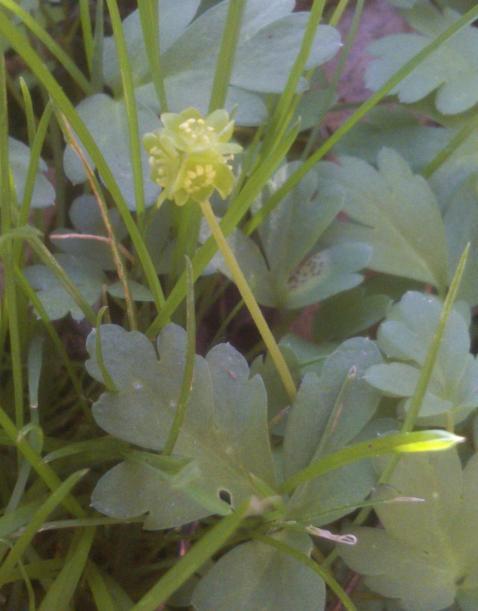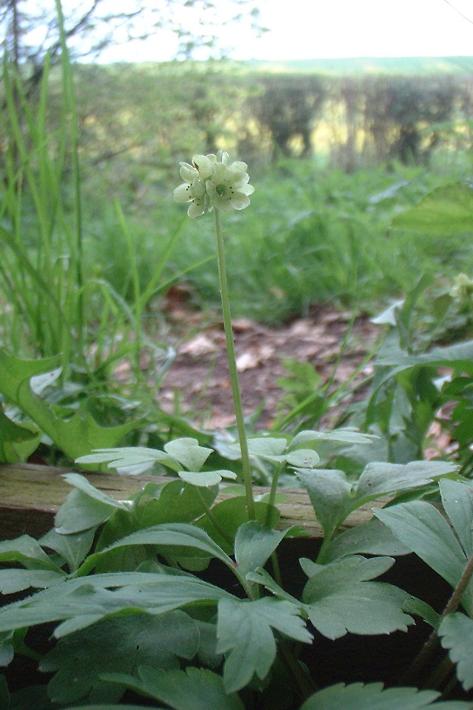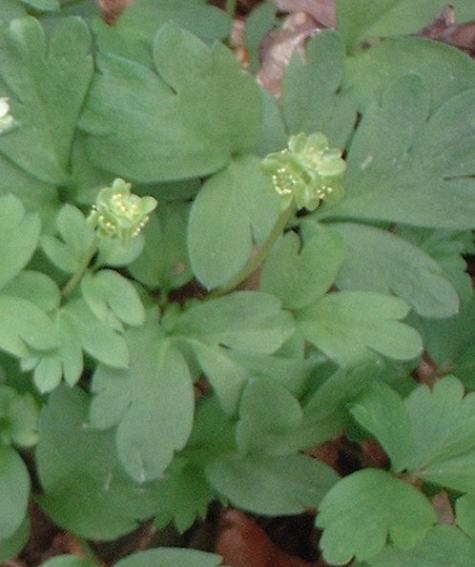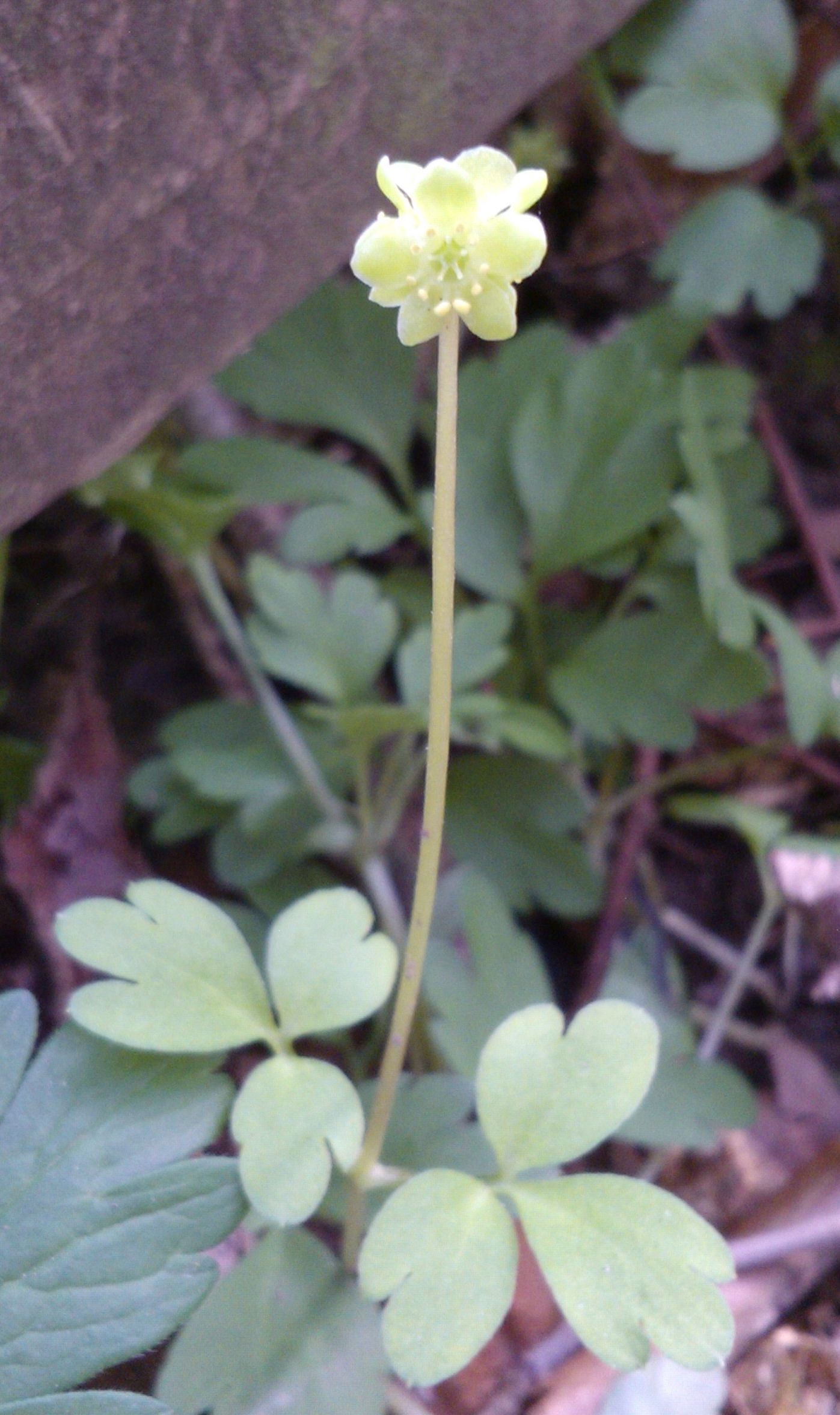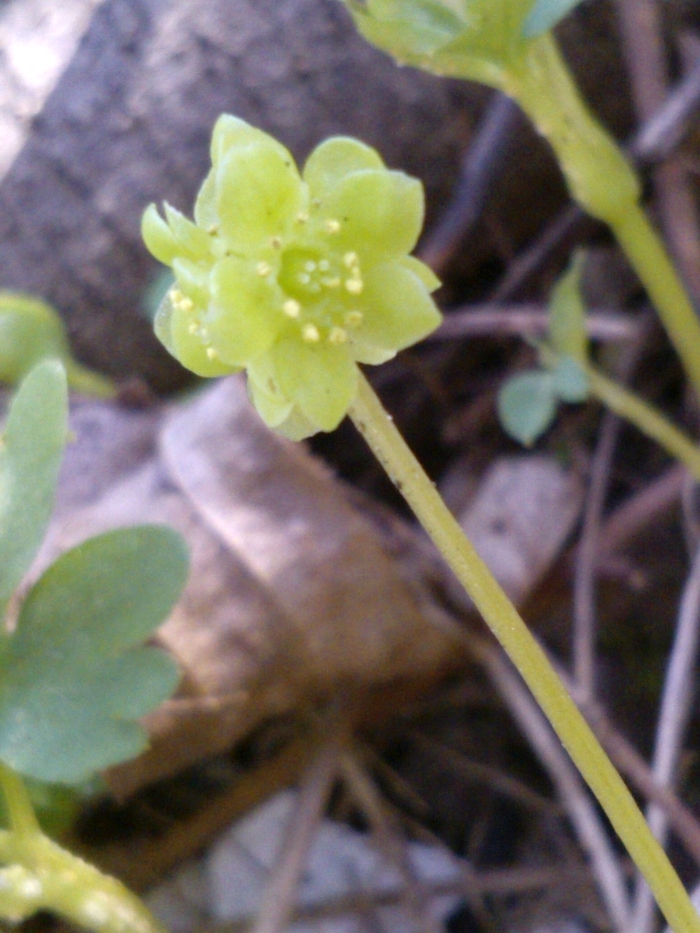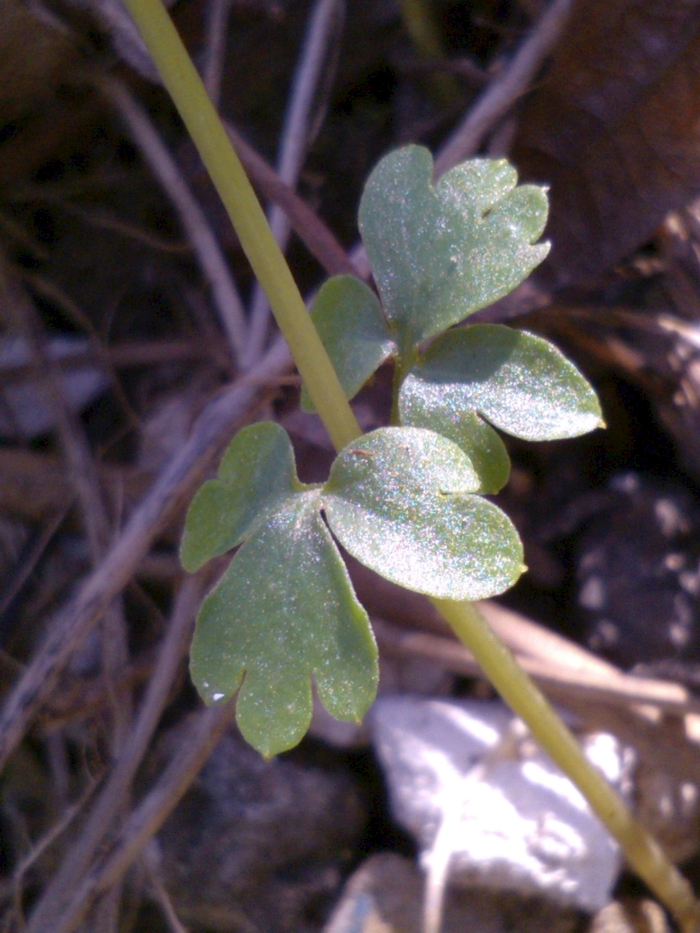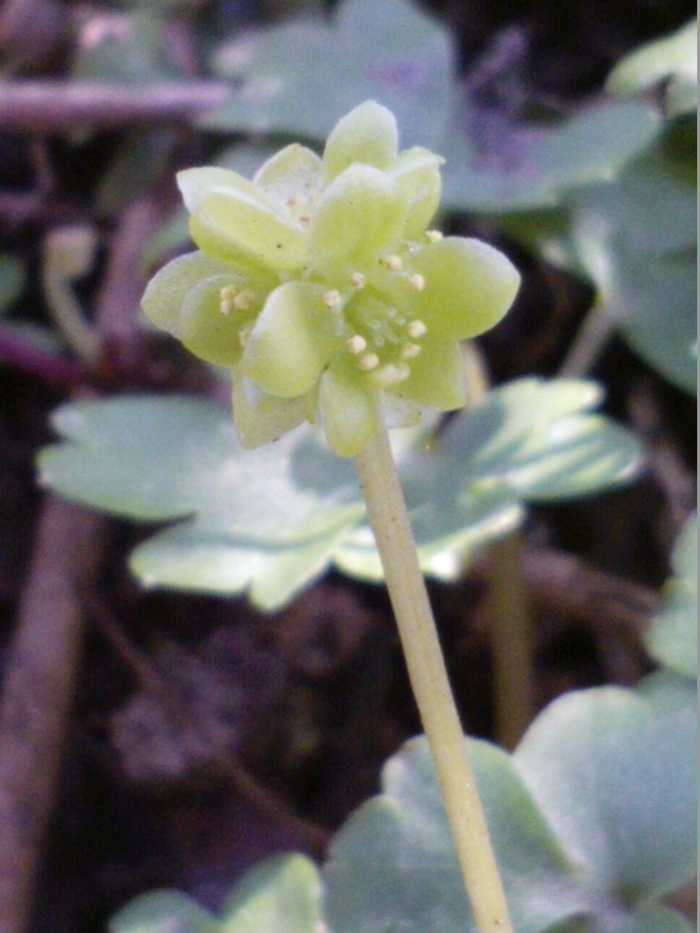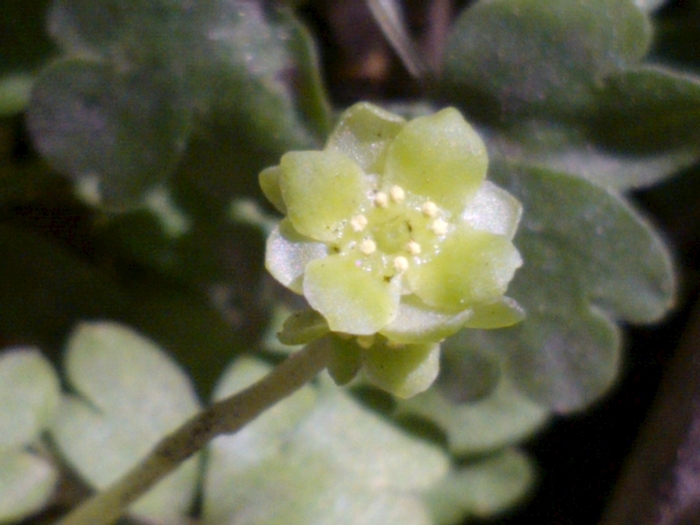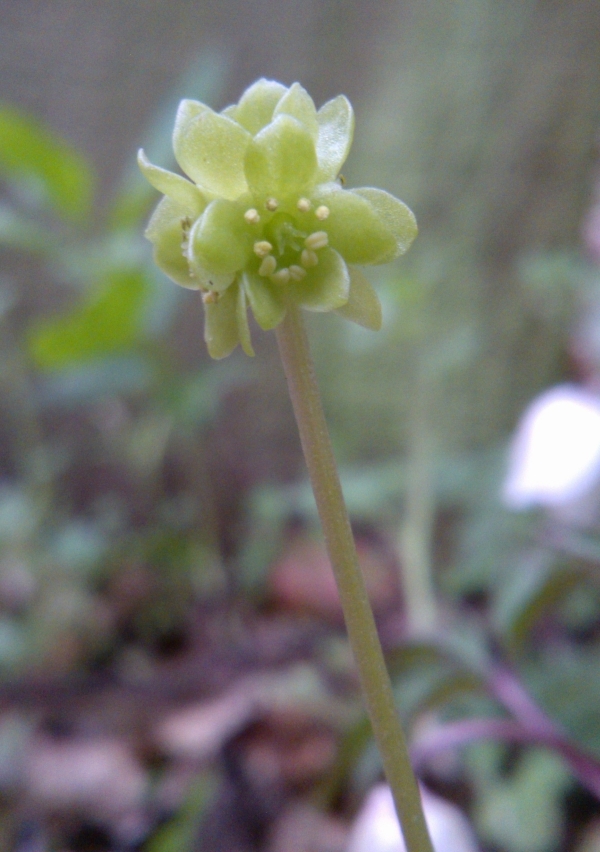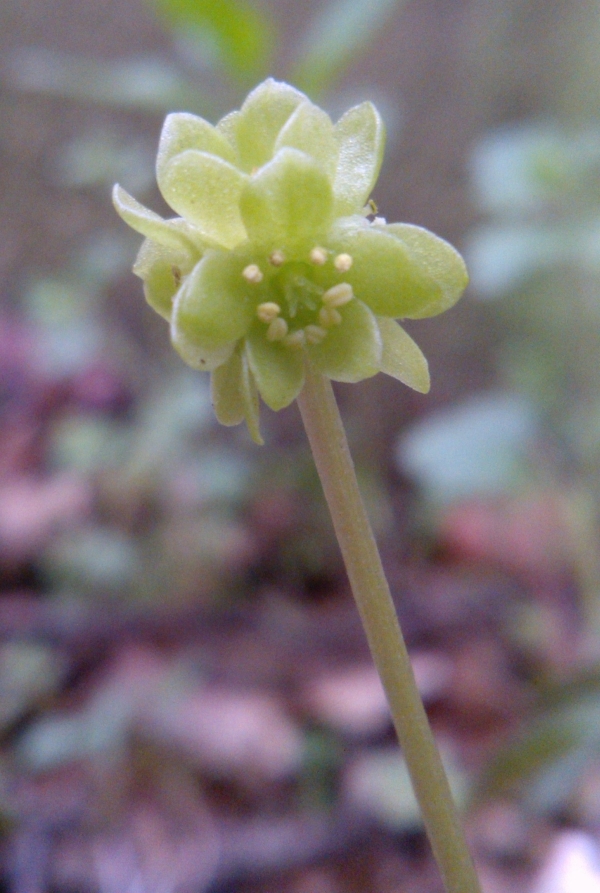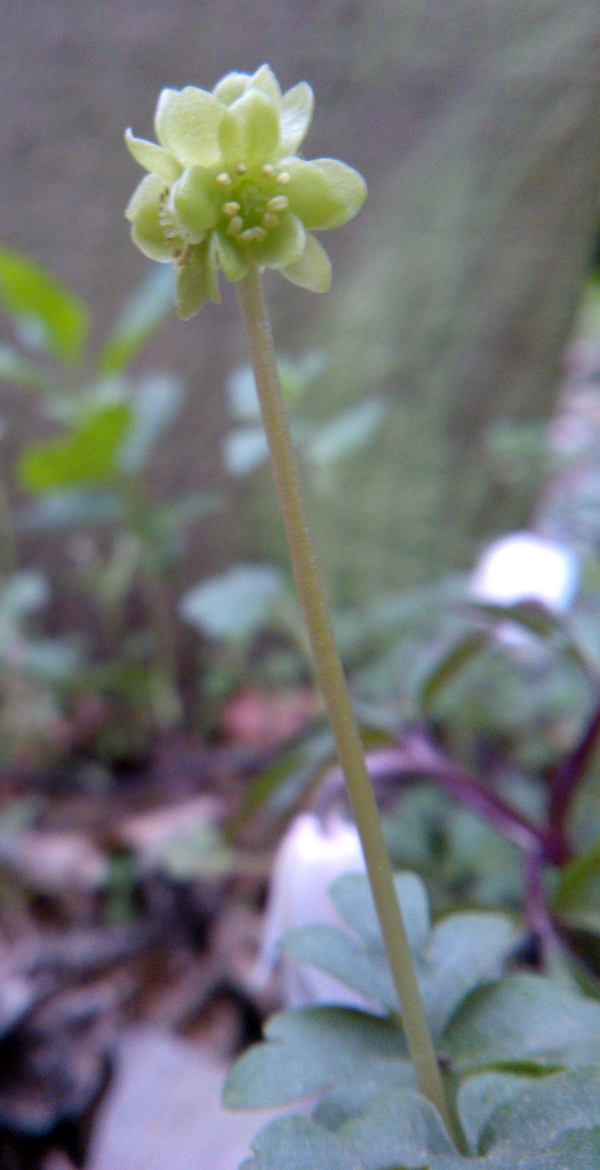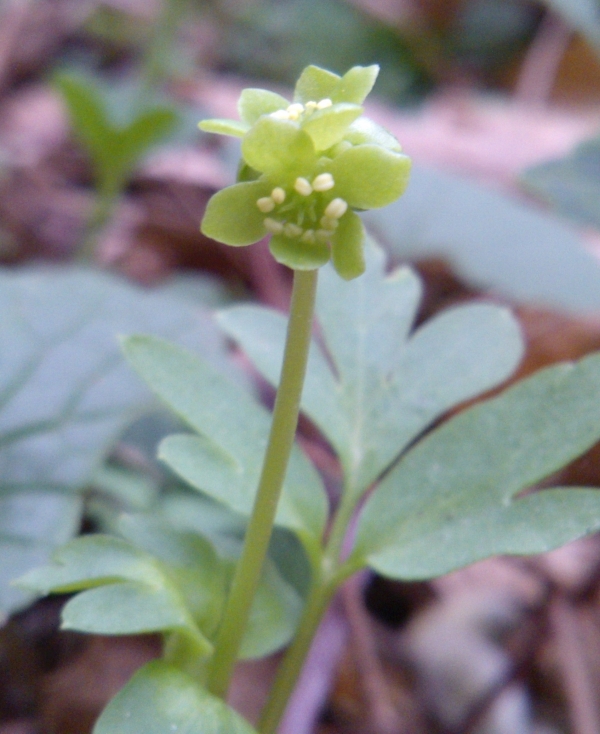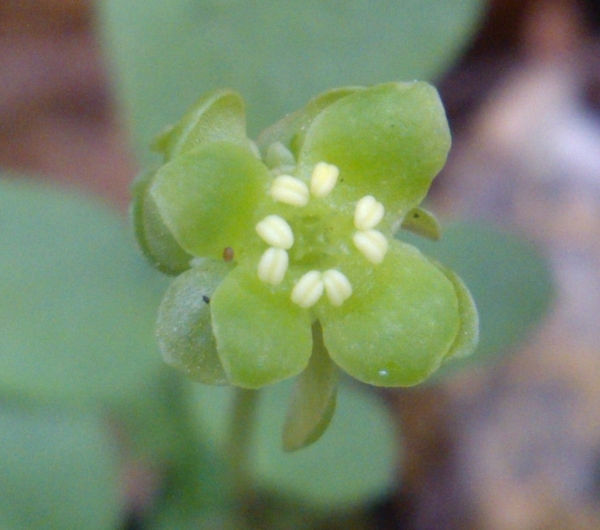Adoxaceae - Town-hall
Clock
Adoxa
moschatellina
(Moschatel, Moscatel, Town-hall Clock, Good Friday plant, Muskroot)
is a curious plant of woodlands, hedges and mountain ledges. The
inflorescence typically bears five flowers arranged in a cube, like
the faces of a town-hall clock. The majority of the
inflorescences have the following arrangement:
Four lateral (sideways facing) five-petaled (five equal petals,
pentamerous) flowers, each with (usually) 3 short bracts (sepals)
behind the petals, and five stamens which fork at the base of their
filaments to give the appearance of ten stamens and five stigmas
with prominent styles (5 carpels). Each half-stamen has a single
locule (pollen-containing cavity) inside the anther and each half
dehisces (drys and splits open) to release pollen. The anthers are
extrorse (facing outwards) so open outwards. Each flower has one
petal uppermost and the side petals of neighbouring flowers may
touch.
The
nectary consists of groups of clavate (club-shaped) multicellular
hairs at the bases of the petals.
The
model has been updated to better represent the typical positions of
the sepals based on (Fukuoka, 1974). The inflorescence is a
condensed dichotomous cyme borne in the axil of a scale leaf or a
foliage leaf at the bulb-like rhizome.
The fifth terminal flower usually has 4 equal petals (tetramerous,
in 99% of cases), 2 (to 4) bracts/sepals, 4 stamens which branch to
give the appearance of 8 stamens, and four styles and stigmas (4
carpels). This flower faces directly upwards.The model has been
improved to reflect the usual position of the carpels: inline with
the petals (antepetalous).
Such a compact arrangement of parts requires well-timed development to prevent the five flowers from obstructing one-another or forming a chaotic tangled mass. Anthesis (flower-opening) occurs on the inflorescence from the top downwards, with the terminal flower opening first (cf. terrestrial orchids in which the basal flowers generally ripen first and the terminal flowers last). The petals are green when newly opened, turning pale yellow later. The styles are structurally mature at anthesis. All the petals of the terminal flower open together. The anthers of the terminal flower dehisce about 2.5 days (2-7 days) later. Then two of the lateral flowers on opposite sides of the cube open about 3 (-6) days after the terminal flower opens. They open their topmost petals first, then the upper pair of lateral petals, followed by the lower pair of lateral petals. Then the remaining pair of lateral flowers open.
Within about 2 weeks of anthesis, the petals turn from green to yellow and after a further 2-3 weeks they turn papery and close over the ovaries. When the flowers are newly opened and the petals green, the yellow anthers stand out like the numbers on a clock face (except there are only 10 of them!).
The aerial parts of the plant appear in late January. The inflorescence soon starts to develop from the axil between two leaves. The basal leaves are long-stalked and 2-3 ternate (divided into three segments 2 or 3 times) meaning that each leaf is a compound leaf divided into three leaflets, each of which is further subdivided into three secondary leaflets which may be similar subdivided a third time. The flowering stems (inflorescences) may reach 15 cm (6 inches) in height and bear a further pair of leaves which are once ternate (each divided into three leaflets).
Moschatel is pollinated by flies (Diptera) and night-flying moths. Flies don't make much use of colour when foraging, so fly-pollinated plants are often yellow-green in colour. At the base of each petal (inside the petal or corolla tube) on its upper (adaxial) surface is a group or cushion of 20-30 short-stalked or sessile (stalkless) and clavate (club-shaped) multicellular trichomes (hairs). These are glandular and secrete the nectar which is sometimes visible inside the corolla. The plant also has a faint musk-like odour (hence 'Moschatel'). The flowers, rhizome and stolons smell like musk.
The
ovaries of each pollinated flower unite to form a single drupe-like
fruit with the sepals (calyx) still attached. This dry, green fruit
may contain as many as five tiny seeds. (A drupe is a fleshy fruit
with one or more seeds, each surrounded by a stony coat). The seeds
are thought to be dispersed by birds, slugs and snails. Seeds eaten
by slugs and snails are still viable after passing through the
digestive tract. As the fruit ripens, the stalk of the plant bearing
the fruit 'corkscrews' down to the ground, which perhaps makes them
more accessible to slugs and snails.
Germination is epigeal (the cotyledons appear above ground and
photosnythesise). Creeping stolons root at intervals to produce new
plants (cloning). Each plant has a short whitish rhizome which puts
out new shoots each January. The terminal flower opens around
mid-March and in mid-May the rhizomes and stolons grow extensively.
In April the stalks of the leaves corkscrew down to the ground and
by mid-June no plant remains are visible above ground. Some plants
may, however, flower as late as May. The plant is perennial,
surviving as a subterranean rhizome (short, white and scaly) until
the following winter when the cycle repeats.
Only about 55% of moschatels are reported to have the typical
inflorescence form just described. The lateral flowers are the most
variable and some inflorescences may have as few as 2 or 3 flowers
or as many as 10, though almost 90% have five flowers. Other
variations occur in the number of petals. The terminal flower
sometimes has five petals or occasionally only 3, and one or more of
the lateral flowers may have only 4 petals.
There has been much controversy over recent years as to what family Adoxa belongs. Traditionally, the family Caprifoliaceae included Adoxa, Viburnum and Sambucus (the Elders). However, on the basis of molecular evidence these three genera have been seperated from Caprifoliaceae, which still contains a number of genera including the Honeysuckles, Lonicera.
Some favor placing each of these three genera in its own family: Adoxaceae, Viburnaceae and Sambucaceae. From a field botany perspective I would say this is satisfactory, but when molecular data conflicts with morphological data we have to decide whether we want to use a classification based on morphology (which facilitates determinations of species) or one that reflects evolutionary relationships. The latter is generally favored, though even molecular data can be inconsistent due to its incompleteness or horizontal gene transfer.Others place all three genera in the family Viburnaceae.
Further
Reading
Erbar,
C. and Leins, P. 2010. Nectaries in Apiales and related groups. Plant
Dev. Evol. 128(1-2): 265-295.
Fukuoka,
N. 1974. Floral morphology of Adoxa moschatellina. Acta
Phytotax. Geobot. 26: 65-76.
Holmes,
D.S. 2005. Sexual reproduction in British populations of Adoxa moschatellina L. Watsonia 25: 265-273.
Jefferson, R. and K. Kirby, 2018. A scent of musk- the 'life and
times' of Moschatel, the Good Friday flower. British wildlife:
December, 79-85.
Whitehead, H. 1902. Variation in the Moscatel (Adoxa Moschatellina
L) Biometrika 2: 109-113.
Article
created: 30 April 2016
Article updated: 4 April 2019, 25 March 2020, 21
March 2022, 1st Jan 2024
| |
|
|
|
|
|

